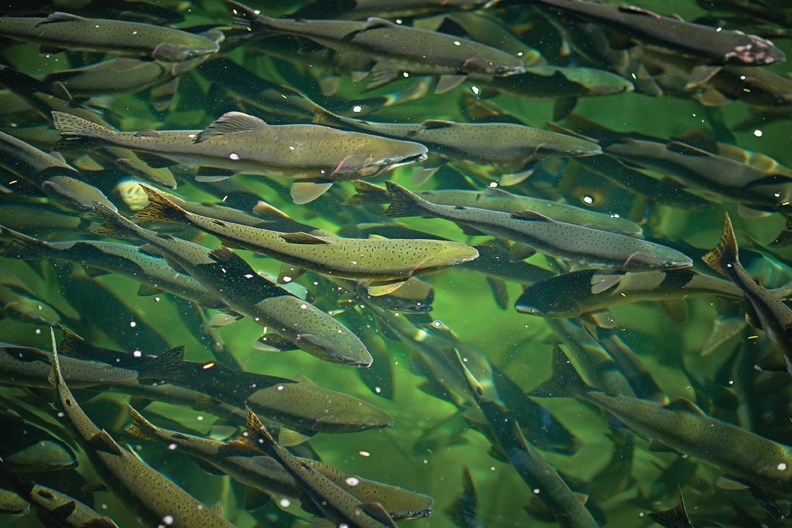It’s the elders’ vision come true. There are so many pink salmon returning to spawn in Jervis, Narrows and Salmon inlets that shíshálh (Sechelt) First Nation opened the area last month to commercial fishing for the first time in 50 years.
“We’ve seen this year here up at the head of the inlet 386,000 pink salmon in the Skwawka River, 209,000 in Deserted River, 10,000 in the Brittain, 30,000 in Vancouver River, 250,000 in Tzoonie River, and 58,000 in the Sechelt Creek – and Sechelt Creek is less than a kilometre long,” Sechelt Nation resource director Sid Quinn said.
While the record returns (some more than double previous returns) are cause for celebration, Chief Calvin Craigan noted too many fish can cause damage to the river systems.
“So through collaboration with DFO we allowed some access to take the excess out,” Craigan said, noting 12 commercial fishing boats took a total of 94,900 pinks from the inlet during two separate fishing openings in August.
“What it did was it benefited not only this community but also other communities. There were fishermen from Campbell River, Richmond, Nanaimo – they came in and got the benefits of what the Sechelt Nation did to rebuild that stock.”

Craigan said the Sechelt Nation has been working to rebuild salmon habitat for decades, which has led to the massive returns.
Work has included cleaning up creeks, deactivating logging roads, cleaning up landslides and removing old culverts in areas where salmon spawning creeks could be negatively impacted.
“It’s part of the vision of the elders. When our people started to see our resources being decimated in the 1950s they undertook the responsibility to begin to rebuild it, even without Fisheries. There was no Fishery until 1960 when DFO came into the picture,” Craigan said.
“We are getting respect now from the logging companies. We get it from people like Regional Power, who worked collectively with us to not only protect it, but rebuild the habitat and rebuild the stocks. It’s paying off and I think you’ll see a lot more people out in the territory in the next year or two, not only on the commercial side but sport fishermen, too.”
Sechelt Nation worked with Regional Power to rebuild habitat in Sechelt Creek when a run of river power plant was installed in 1997. That year there were around 700 pink salmon that returned to spawn in the creek.
Pink salmon spawn every two years and the numbers in Sechelt Creek steadily increased until 2013 saw about 16,000 salmon returning.
This year Sechelt Creek has an estimated 58,000 pink salmon returning to spawn.
“Every nook and cranny’s full of fish,” Quinn said.
“It was the elders’ vision to bring the salmon back through stewardship of our territory. Stewardship of our territory is the key to successful rivers and watersheds. You need that habitat for them to survive.”
Quinn said the recent drought hasn’t negatively affected salmon runs up the inlet as most creeks are glacier fed and very large, keeping them cold enough and flowing with enough water for the salmon to spawn.
The power plant on Sechelt Creek is also equipped with a control weir that can release more water into the creek if needed.
Craigan said an event to mark the historic pink salmon return would take place this month up at Sechelt Creek.
“It’s definitely something to celebrate,” he said.



